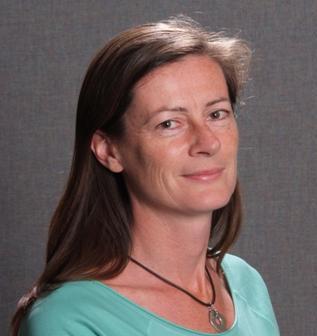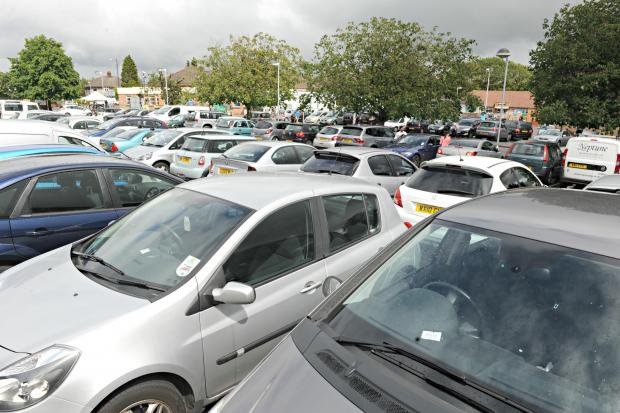History offers up many grand ideas for how urban planning and design can be used to improve cities and society to be more sustainable and liveable. These ideas include early urban reforms by David Dale, Robert Owen, and Titus Salt, Benjamin Ward Richardson’s City of Health, Ebenezer Howard’s Garden City and Le Corbusier’s Contemporary City, amongst others. The eco-city, as an idea that initially developed out of the 1960s grassroots environmental movement, should be considered within this long tradition of ideas for the betterment of cities. The construction of ‘eco-cities’ in the recent decade has also been controversial. The aim of this article is to introduce the ideas and practices of contemporary eco-cities and to discuss the extent to which they can be regarded as an improvement on the work of previous urban reformers.
Eco-city concept and development stages of eco-cities
The term ‘eco-city’ was first coined in 1987 by US-based eco-city pioneer Richard Register as ‘an urban environmental system in which input (of resources) and output (of waste) are minimised’. As the eco-city concept began to be used more extensively, it became more broadly defined, ergo, there is no single accepted definition in the literature. Recognising and permeating ideas of nature in the city into the concept of sustainable cities should be considered essential in setting a framework for eco-cities. This idea can be seen as a continuation of planning trends which attempted to reconcile the nature-city relationship, beginning with Howard’s Garden City movement. The approach is also novel, in that it represented a wide range of factors which coalesce around sustainability in the contemporary context of global climate change, environmental degradation and environmental politics.
There are three stages in the development of eco-city. Early initiatives in the 1970s and 1980s were locally-oriented, bottom-up approaches which aimed to improve environmental conditions, with only few examples of practical projects. The period of 1990s to early 2000s marked the emerging stage of eco-city development, when balanced sustainable development was adopted as a principal objective. At this stage, national and municipal governments started to develop eco-cities and eco-towns, most of which were redevelopments or expansions of existing towns and cities as demonstration projects. Successful examples include eco-towns in Japan and small-scale ones in Europe. Since the mid-2000s, a number of ambitious built-from-scratch eco-city masterplans have emerged, aiming to make entire towns and cities highly sustainable. These top-down proposals are occurring predominantly in Asia, including the highly publicised Dongtan Eco-City, Sino-Singapore Tianjin Eco-City and Caofeidian Eco-City in China and the Masdar City which was proposed as a zero-carbon city in the UAE. The latter two stages of eco-cities are the foci in the following discussion, considering the development scale and significance.
General visions and planning of contemporary eco-cities
Contemporary eco-cities and eco-towns are, in general, an improvement on previous ideas and works in terms of their visions, planning and objectives.
Almost all smaller eco-town plans and holistic eco-city blueprints in recent years are emerging as reflections of and responses to the global context of climate change and environmental degradation, with emphasis on cutting-edge technology, clean energy, and circular economy to achieve sustainable living. This indicates that the finiteness of resources as well as the ecosystem itself has been more extensively recognised. This is an improvement from earlier works. Earlier works targeted urban problems including sanitation and personal health in the case of ‘Hygeia, City of Health’ by Richardson in 1876, and poor working and living conditions in the case of Saltaire and New Lanark, but hardly realised the limits of the environment. An example was Howard’s claim in his 1902 book Garden Cities of Tomorrow: ‘…to a more noble use of its infinite treasures. The earth for all practical purposes may be regarded as abiding forever’. Today’s improvement leads to the consideration of intergenerational ecological justice, being an essential principle of the development of eco-cities.
Moreover, there are three forms of eco-city projects identified: new developments, expansions of urban areas, and retrofits where existing cities adopt eco-city principles. Unlike earlier visionaries such as Ebenezer Howard and Le Corbusier who tended to reject the idea of gradual improvements to the conditions of existing cities in favour of comprehensive transformations of the urban environment, the planning of contemporary eco-cities/towns includes various forms of urban development and redevelopment. Whilst the ambitiously proposed built-from-scratch eco-cities in China and the UAE belong to the first type, most examples of smaller-scale ones in Japan, Germany, Scandinavia, and the UK are expansions of urban areas and retrofits, which is an improvement in terms of development forms.
Implementations and outcomes of contemporary eco-cities
The implementations and outcomes of contemporary eco-cities at early stage of the development in the 1990s and early 2000s are an improvement upon early urban reformers in many aspects, while those at current development stage may vary in light of different contexts. It is doubtful that the prospects of these newly-built eco-cities might be an improvement.
At the early stage, contemporary eco-cities and eco-towns were mainly developed in Japan and central and northern Europe, exemplifying the eco-cities in Germany. During this stage, a distinctive characteristic of small-to-moderate-scale developments is that they gave equal weighting to the environmental, economic and social aspects of their design and integrated them well.
The Eco-Town Program was launched in Japan in 1997 through national initiatives and municipal redevelopment planning in order to deal with waste management issues, industrial pollution and to stimulate new industry development during a time of economic stagnation. The Eco-Town concept in Japan originally focused on Industrial Symbiosis—the iconic 3R application of Industrial Ecology which concerns ‘the productivity and environmental impacts of resources in industrial societies’ (McManus 2005). The theory then extended to Urban Symbiosis to become part of the Eco-City concept, focusing on overall urban planning and urban ecosystems, civil society and greening of cities. The implementation of this program and the successful development of 26 eco-towns, which focused mainly on circular economy and environmentally conscious planning, highlight three major aspects of improvement on earlier urban reformers. First, the government put in place a comprehensive legal framework for becoming a recycling-based society. This action provides a legislative foundation, imposes a sense of duty, and reduces the risk for further transition and development in industries and society, which is a practical improvement on the ideas of earlier reformers which were often hard to carry out (in a large scale) without legislative basis. Second, the program emphasised a combination of initiatives from public sector, business sector and, especially, civil society. There were a number of citizen activities emerging during that period and engaging in the program, which stands in contrast to places like Saltaire that were largely paternal. Third, the program was carried out mainly in the form of redevelopment and retrofitting projects, which faced less trouble than those early built-from-scratch ideas because it could take advantages of existing social capital.
There are also two smaller-scale eco-town examples in Freiburg, Germany: Vauban and Rieselfeld. These two district-scale projects are expansion of the city in response to the increasing population. They were carefully planned and developed with foci on public transport, dense but diverse housing, and environmental buildings. A major improvement on earlier works includes the emphasis on public transport, as these two districts were designed to minimise car dependency, given that 35% of residents in Vauban have abstained from driving (Beatley 2012). Le Corbusier’s fetishisation of the automobile in his La Ville Radieuse (1967) is of little relevance considering today’s traffic congestion, the high energy consumption, and air quality concerns associated with automobiles. These two examples successfully demonstrate how public transport can contribute to urban and environmental sustainability.
At the current stage (since mid-2000s), contemporary eco-cities are primarily proposed to be built from scratch, on a grand scale. They would represent highly sustainable, experimental flagships, most of which are promoted by the Chinese national and municipal governments including examples such as the Masdar City in the UAE. The characteristic of these projects is they are predominantly entrepreneurial cities and tend to prioritise economic concerns over environmental ones. In terms of implementation and outcomes, these new cities sometimes fail to demonstrate improvements on previous works, with uncertainty remaining considering that many of them are still under construction.
Due to rapid population influx, emissions pressure and pollution issues, the Chinese state government encourages local governments to experiment the ‘eco-city’ as a flagship project for new technologies and ‘sustainable’ economic and ecological urban development. Highly publicised projects include Dongtan Eco-City on Chongming Island, Shanghai, Sino-Singapore Tianjin Eco-city and Caofeidian Eco-City. The first project, Dongtan Eco-City, has already been stalled due to issues of land quotas. The subsequent Caofeidian Eco-City, claiming to be a renewable energy city, has only completed a few buildings and failed to attract residents, suffering from huge debt and being indefinitely postponed. The only project that has come close to completion is the Sino-Singapore Tianjin Eco-city, which has not been developed without issues and is still of little improvement upon earlier urban reformers. It is being developed according to 26 sustainability indicators (Fig. 1), demonstrating the progressive practices within the Chinese context, although many of them are taken for granted in the West. There are many problems in the construction. The city claimed to promote green transport but the implementation of numerous highways are still the dominant transport structure in the city, accompanied by high-rise residential buildings, which is a strong resemblance of the type of city Le Corbusier imagined for ‘the contemporary city’. There is even less open green space compared with Le Corbusier’s ideas. Additionally, this city has only managed to attract 6000 residents thus far—far less than its objective. There is also hardly any inclusion of social sustainability, where there should be relevant viable attempts, as Caprotti states (2015), ‘the view of sustainability which is concerned purely with a city’s environmental footprint, or with its economic success is severely limited’.
 |
| 26 Key performance indicators to measure success (Sino-Singapore Tianjin Eco-City Investment and Development Co.,Ltd 2015) |
In the case of Masdar City, the so-called ‘carbon-neutral city’ (recently modified to be ‘low- carbon city’) initiatives are just a part in making Abu Dhabi a leader in the industry of renewable energy technologies, which does not include many real actions with reconciliation of the nature-human relationship. An exception to the Asian ambitions of the eco-city is the Eco-town plan in the UK, which may constitute an improvement on earlier works. Those eco-towns proposed by the North West Bicester, which are an expansion of existing urban areas, aim for affordable housing and promoting social justice.
In conclusion, the contemporary eco-cities, from the early emerging stage of the1990s till today, are in general, an improvement upon the work of earlier urban reformers in terms of their ideas and planning. Whilst the early-stage developments such as Eco-towns in Japan demonstrate an improvement in terms of practical implementations and existing outcomes, brand-new built-from-scratch eco-cities may not be sustainable in reality in light of different contexts. They tend to prioritise economic goals instead of environmental concerns. Whether these newly built eco-cities will be an improvement on those of earlier reformers remains uncertain. The developments which have begun, however, provide lessons for future urban developments which can be introduced to improve future designs and the redevelopment of existing cities.
Blog by Cabot Institute Masters Research Fellow Shiyao (Silvia) Liu.
Further reading
Beatley, T., 2012. Green cities of Europe: global lessons on green urbanism, Washington DC, Island Press.
Caprotti, F., 2015, Eco-Cities and the Transition to Low Carbon Economies, Palgrave.
Howard, E., 1902, Garden Cities of Tomorrow, London: Swan Sonnenschein.
Le Corbusier, 1967, The Radiant City (La Ville Radieuse): Elements of a doctrine of urbanism to be used as the basis of our machine-age civilization, New York, The Orion Press.
McManus, P., 2005, Vortex Cities to Sustainable Cities: Australia’s Urban Challenge, UNSW Press, Sydney.
Register, R., 1987, Ecocity Berkeley: Building Cities for a Healthy Future. Berkeley, CA: North Atlantic Books.
Richardson, B.W., 1876, Hygeia, A city of health. MacMillan & Co., London.
Sino-Singapore Tianjin Eco-City Investment and Development Co.,Ltd. 2015, Tianjin Eco City website, http://www.tianjineco-city.com/en/index.aspx
























